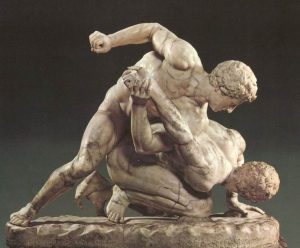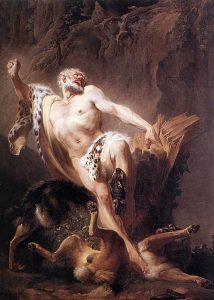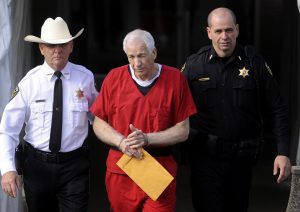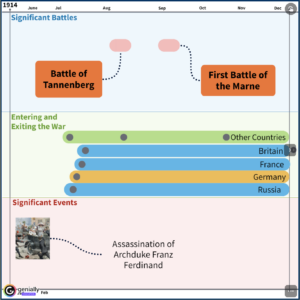Wanting to become an athlete doesn’t happen overnight. As an athlete, you think about things from a greater perspective than just thinking about winning or losing a game. It’s about the work you put in, the extra hours you spend on perfecting your craft, the sleepless nights you have, and the fight in you, that makes you an athlete. But, what makes you so different from other athletes? You are all doing the bigger things than just being talented at the sport you play. Everyone puts in the extra work, but why? Some athletes think bigger about what’s ahead of them, especially when it’s about sports. When playing, you want to be the best version of yourself and give your all. You push when you can’t push anymore, you say yes, even when you want to say no, and you go that extra mile when you already did what was asked. That is what separates you from the good athletes and from the great athletes. It’s the mindset you have when walking into a new obstacle. You want to be the best. You have to show the best; you have to look the best, and you have to act like you are the best. When being a great athlete, you become known, and people start looking at you differently. They start to remember your name. If you keep putting in the work you will become an all-star, but if you proceed to go over and beyond putting in the extra work, you become an Olympian.
To be an Olympian, you have to strive to be an Olympian. Being an Olympian doesn’t come easy. If it did, everyone would be an Olympian. You have to prepare, you have to train, and you have to overcome anything that gets in the way, to become an Olympian. When you know who you are, you can’t look back, because there are other athletes trying to take that spot of yours. You have to focus on what’s ahead. Don’t dwell on the past. Don’t let it slow you down. It’s life. When working hard for something this big, your body will hit a wall, but you have to push through. You have to think like a winner. Most people will slow down and quit, but not you. When your mind is telling you that you are tired, your body is still telling you to push. This is where the separation comes in from you. Other athletes feel the same way; they either push through or quit. You have to separate yourself from these other athletes. That separation leads to great things. You keep your eye on the prize. You fight for what you want. See yourself winning. To be the best person you can possibly be. Be that great athlete, be that Olympian. Have that mindset of an Olympian.
An Olympian is someone who is strong, brave, resilient, and confident. Olympians have a great work ethic and worry about themselves. An ancient Greek wrestler, Milo, was just that. A talented wrestler from the Magna Graecian city of Croton in the sixth century BCE was born; he was the son of Diotimus. The most common athletic types at the time were boxers and wrestlers, whose physical prowess was prominently emphasized in images of athletes from that era.1 Milo was a young, slender man when he began his quest. When he initially began wrestling, he was a member of a boys’ team. On his youth team, he won many victories. Milo of Croton had a difficult road; as a boy, he competed in youth wrestling competitions and only lost once. He was passionate about winning. He took everything he did seriously, and as a result, he became well-known.
Milo won so many Olympian competitions that he had to have been far above forty years old when he took part in his final match. He had legendary strength. According to Pausanias, by holding his breath and inflating his veins, he was able to free himself from a chain that was fastened around his head.2 Pausanias was a Spartan general who the led the Greek forces against the Persians. He also spent a lot of time with Milo. Milo, the ancient Greek wrestler, is known to be the strongest person to have ever lived in the sixth century. The Greek wrestler had great success at what he did.
Milo went through many battles and hardships. He started his career by joining the military. To Milo, being in the military was bigger than being independent and selfless. Milo had a military leadership role. It was about who he was fighting for. He was part of a team, he had to battle together, fight together, and push together. When one fell, they all fell. When it’s about service such as the military, it was more than just about him.3 Military Milo led to Olympian Milo. One of the finest wrestlers in ancient Greece, Milo accomplished the incredible achievement of winning six Olympic titles in the sport in the late sixth century BCE. Milo led the Croton soldiers in a battle against Sybaris while adorned with his six Olympic crowns, wearing a lion’s skin, and carrying a club, a nearby hamlet while imitating Herakles and convinced of his own strength. The club, the lion skins, and the olive wreaths all played a significant role in the Herakles’ stories. Milo led his people to triumph, just like Herkles’ did in his story.4
The mindset Milo had was unique. It was different from others. He competed.5 He wanted to be the best at what he did, and he showed that he was the best at what he did. Milo conquered the battles. He led the attacks. It was his group versus another group. He led his group, the Crotiniate army.
While wearing lion’s fur, Milo praised his soldiers because of the fight they had in the battle over Sybaris in 511 BCE.6 Croton and the Sybaris engaged in combat in 510 BCE over a political issue. Pythagoras was the one who persuaded Croton to join the fight against Sybaris, and Telys, the latter’s dictator, declared war on Croton. Milo and Pythagoras shared a tight bond. During a celebration, the pillars of the building collapsed, causing the roof to collapse. Milo of Croton held the roof up, by using his strength, letting everyone evacuate from the celebration, while also rescuing himself. The well-known mathematician Pythagoras was a friend of Milo’s. Myia, the daughter of Pythagoras, was married to Milo. Telys forced Sybarite people to take over Croton after taking the belongings of the richest families. Telys ordered his people to go back, but when he realized they were at a disadvantage to Croton, they refused. Instead, they engaged Telys and Sybaris in battle and succeeded. Milo was the one who led the whole thing, but with the help of his soldiers, they came out with a victory.7 Overcoming the Sybarites, and Greeks from Sybaris, Milo led the Crotoniate army to triumph. It was the Crotionate army vs the Sybarite army. The Crotiniate army won because of Milo’s leadership of his 100,000 soldiers and himself against the 300,000 Sybarite soldiers.8 Before the battle happened, Milo wanted to intimidate his opponents. Milo showed his strength with his bare hands, killing a lion by hunting it down and choking it to death. Milo led Croton to victory, as was said previously. They were guided by Milo, who used his incredible physical strength to turn the soldiers positioned in front of him. Battling in the military, and fighting different armies, is what gave Milo that drive of being a winner. He saw that he led the attack and he won the battle. Why not keep battling? The military is what made Milo become an Olympian. The military showed him what fighting was made for, and the fighting made him become a winner.9 As time went on, Milo started training. This time he wasn’t training for the military, he was training for something bigger than that. He trained to become the Olympian he wanted to be. He didn’t want to be defeated.
Milo yearned to grow stronger as a child. He was clear about his goals and what he wanted to excel at. Milo was alleged to have gained his incredible strength using a simple yet efficient process. One day not far from Milo’s home, a newborn calf was born. Every day, Milo would carry a baby calf on his shoulders as he went on about his day. The wrestler made the decision to go back and repeat the same process for the next four years. Milo continued this strategy, until he was lifting a four-year-old bull rather than a calf. This is a strategy we today call “progressive overload.”10 The story of Milo and the bull demonstrates the foundations of his strength training.11 He was a man of incredible strength and athleticism. Milo’s training can be summarized in three simple techniques for building muscles that everyone can learn: start off extremely light, don’t skip exercises, and progressively increase training. By lifting enormous stones, this Milo gained national attention as well. Three stones, the heaviest of which was approximately 500 kg, came from Greece, and each had inscriptions stating who was responsible for lifting it. This was also a contest including physical activity.12

Milo had a mind-blowing diet. Having captured the laurel wreath in seven successive Olympiads, Milo is said to have developed his prodigious strength with a daily training diet that comprised twenty pounds of meat, twenty pounds of bread, and eighteen gallons of wine each day.13
His mindset was on a different level. The way that he thought was like that of a champ. He knew with the amount of training and preparation that no one could ever beat him. Milo loved performing party tricks, such as wrapping a cord around his forehead, holding his breath, and then snapping it with just his protruding veins. A pomegranate from his palm is another thing he would love to dare opponents to take. Milo wouldn’t even have dented the fruit, so no one could get the man to loosen his grip. The man was able to release his hold, but no one would be able to open his hand to release the hold. Milo’s request for someone to bend his outstretched finger was actually one of his favorite games. No one could ever do it. He had the power, he had the strength, and he played with others because he knew that he was the best.14
Milo’s biggest accomplishment was becoming an Olympian wrestler. He did just that. In the 60th Olympiad, Milo won the wrestling competition in the youth division in Olympia and Delphi. As an adult, he won the competition an additional five times at Olympia and six times at Delphi. Additionally, he won ten titles in Isthmia and nine at Nemea. That means that starting in 540 BCE, his professional career lasted for almost thirty years, twenty-four of which he spent as the undisputed champion in every stephanitic Games. Periodonikes were athletes who excelled at all four Panhellenic Games. Milo was successful five times. Milo won the wrestling tournament in thirty-two of the Greek national games as well as six Olympic Games and seven Pythian Games, all of which were held every four years. Here, the legendary wrestler set a record that has never been surpassed or matched: five or six Olympiads as the undisputed champion in the sport. But Milo’s career lasted for two decades, therefore such records required a very long career, going from 536 to 520 BCE.15

As Milo started with a young calf, it is highly likely that this was a weight that was simple for him, given his prowess in wrestling. Milo would easily defeat his opponents due to his smothering strength. Milo crushed his opponents; he stood seven feet tall. Milo would consume raw bull meat to frighten his rivals and drink its blood for fuel as if his absurd stature weren’t enough. Although Milo of Croton served in the military, his athletic profession was the one in which he excelled the most. But being an accomplished athlete also made him a better soldier, particularly since his preferred sport was wrestling, a talent that was easily transferable to combat.
Ancient Greeks gave great people extraordinary deaths that fit with their personas. Therefore, strong and accomplished athletes in ancient Greece may strive to obtain a comparable amount of heroic honors after death by replicating the lives and adventures of mythical heroes. Through their exploits, adventures, and successes, some of the members of this culture of heroes showed such a degree of strength and virtue that they inadvertently attained a degree of immortality, inspiring the establishment of religious cults after their passing and continuing to have an impact on the earth.16 Milo ultimately died a less-than-honorable death despite all of his might and glory. His remains were discovered at the base of a tree in the woods. The legendary hero Milo of Croton died at the hands of a lion. Milo passed away tragically. Never one to back down from a challenge, Milo discovered an ancient tree trunk with wedges in it. He wanted to use his bare hands to split the tree in half. By inserting his hands into the wedges, and possibly his feet too, into the crack of the trunk in an effort to demonstrate his strength. Although he was able to remove the wedges, the trunk closed on his hands, trapping him. Milo was trapped and held captive until he was devoured and eaten alive by lions.

The most popular wrestler of this era was undoubtedly Milo, and he was undoubtedly the most successful. Milo of Croton is known for strength training and wrestling, he became an Olympian in wrestling throughout his career. What this man was thinking or what he may have accomplished if he hadn’t perished or hadn’t been eaten by the lions will never be known to us.17 Known as the strongest person to ever live, Milo will always be remembered as an Olympian in ancient Greece.
- Jan BAŽANT, “On the Gluttony of Ancient Greek Athletes,” Listy Filologické / Folia Philologica 105, no. 3, (1982): 130. ↵
- Gordon L. Fain, In Ancient Greek Epigrams: Major Poets in Verse Translation, 1st ed Lucillius, (University of California: Press, 2010), 224. ↵
- Anthony Preus, “Public Philosophy in Magna Graecia: The First 100 Years,” In Philosopher Kings and Tragic Heroes: Essays on Images and Ideas from Western Greece,” (Parnassos Press – Fonte Aretusa, 2016), 4-6. ↵
- David J. Lunt, “The Heroic Athlete in Ancient Greece,” Journal of Sport History 36, no.3 (2009): 380-381. ↵
- Anthony Preus, “Public Philosophy in Magna Graecia: The First 100 Years,” In Philosopher Kings and Tragic Heroes: Essays on Images and Ideas from Western Greece,” (Parnassos Press – Fonte Aretusa, 2016), 18. ↵
- Jan BAŽANT, “On the Gluttony of Ancient Greek Athletes,” Listy Filologické / Folia Philologica 105, no. 3, (1982): 130. ↵
- Anthony Preus, “Public Philosophy in Magna Graecia: The First 100 Years,” In Philosopher Kings and Tragic Heroes: Essays on Images and Ideas from Western Greece,” (Parnassos Press – Fonte Aretusa, 2016), 6. ↵
- David J. Lunt, “The Heroic Athlete in Ancient Greece,” Journal of Sport History 36, no.3 (2009): 380-81. ↵
- Gordon L. Fain, In Ancient Greek Epigrams: Major Poets in Verse Translation, 1st ed Lucillius, (University of California: Press, 2010), 224. ↵
- Takashi Abe, Jeremy P Loenneke, Christopher A Fahs, Lindy M Rossow, Robert S Thiebaud, and Michael G Bemben, “Exercise Intensity and Muscle Hypertrophy in Blood Flow-Restricted Limbs and Non-Restricted Muscles: A Brief Review,” Clinical Physiology and Functional Imaging 32, no. 4, (2012): 247. ↵
- David J. Lunt, “The Heroic Athlete in Ancient Greece,” Journal of Sport History 36, no.3 (2009): 380. ↵
- Jan BAŽANT, “On the Gluttony of Ancient Greek Athletes,” Listy Filologické / Folia Philologica 105, no. 3, (1982): 130. ↵
- James C. Whorton, “Muscular Vegetarianism: The Debate Over Diet and Athletic Performance in the Progressive Era,” Journal of Sport History 8, no. 2, (1981): 58. ↵
- Maria Pavlou, “Aegina, Epinician Poetry, and the Poetics of Conflict,” Phoenix 69, no. ½, (2015): 16. ↵
- David Young, First with the Most: Greek Athletic Records and ‘Specialisation (Edinburgh University: Press, 2013), 272-82. ↵
- David J. Lunt, “The Heroic Athlete in Ancient Greece,” Journal of Sport History 36, no.3 (2009): 376. ↵
- S.L. Wisenberg, “Sticks,” Prairie Schooner 84, no. 1, (2010): 106. ↵



7 comments
Olivia Lauer
Congrats on your publishment! When you said that being an athlete is hard work and that you have a lot of sleepless nights, I agreed because it’s very true. Growing up I did a bunch of sports and rarely ever slept. Milo was above 40 years old by the time he did his final match. I think that’s insane knowing he put a lot of work and effort into his career.
Marissa Rendon
Great article! This was such a good read! Milo was a one of a kind athlete. Sadly his death was so unfortunate and devastating. Milo was more than an olympian champion. I found it so fascinating that he would eat raw meat to frighten his rivals, and drink blood to intimidate them. This article was awesome!
Jose Maria Gallegos Cebreros
First of all, congrats on the great article! you did a really good job picturing the strengths that milo had, the image that you use at the beginning of the article matches perfectly with what you wrote on your article. As an athlete, I understand the difficulties that a sport, discipline or however you wanna call it involves and you made it very clear.
Anaely Caez Santana
I can relate to this article coming from an athlete. Wanting to strive, do better than everyone else, and constantly getting compared to others. His story is very inspirational as he was not only an athlete, but he was a greek olympian that led many battles. His death was certainly tragic.
Abbey Stiffler
I can relate somewhat to this article as growing up in sports you are constantly told the difference between being a good athlete and a great athlete. I liked how you related some parts of your article to modern-day terms like “progressive overload.” Some of the facts or details in this article make me question how real this story is. I can’t even fathom 18 gallons of wine each day.
Luke Rodriguez
Reading this from an athlete’s perspective, I understand the grind and the mindset you have to become as great as Milo did, especially since he was an Olympian champion. And I found it very informative that Milo wasn’t just an Olympian Champion, but he was led in many battles then explained the lengths of his strength would go so far as to hold up a roof of a collapsing roof.
Hailey Koch
There are many different types of athletes all over, not just depending on their sport but their mindset and drive. In the article, Kayla explains “they either push through or quit.” Many athletes may not push as hard as others, and that’s how people are separated from others around them. Anyone can go far with their sports or whatever else they want to do, but it all depends on how they work for it. I have never heard of Milo, but after reading this article, I better understand who he is and what he achieved. He is most definitely an inspiration to many and athletes should want to look up to him and everything he had accomplished. It was sad to read that he died in such an unfortunate way, taken by a lion and found in the woods. He may have passed away in such a terrible way, but he is remembered as a hero.